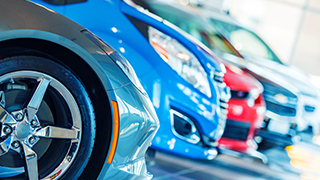A CAR IS AN ASSET OR A LIABILITY?
The lecturer got up from his chair and wrote in oversized chalk letters on the green board: “A new car is a Liability!” The MBA finance class erupted in heated discussion. Calling to order he asked, “Who agrees with this statement?”. Forty-five of the fifty students shot up their hands as if to curry favor the teacher’s opinion. “Why?” Pointing to Declan, a finance major, who responded: “Well apart from the twenty per cent loss of market value driving out of the showroom; the long-term operating costs far outweigh the financial benefits”. Waiting for the lecturer to say: “Good job, case closed!” Declan challenged one of the five, who didn’t raise their hands: “Elena don’t you agree?”
Elena, a very bright twenty-nine year old civil engineer, had been having serious car troubles and recently started talking with a salesman about a new CNG hybrid costing $170,000. This came on the heels of spending more than $18,000 in parts and labor over six months on her fifteen-year-old hatchback and the mechanic has not yet resolved the problem. Out of sheer frustration, Elena has been renting a car for $350 per day and alternating with a taxi when she has classes and errands for her sickly mother.
Elena approached her credit union with the idea and they offered 100% financing inclusive of insurance for up to seven (7) years. Elena earns $15,000 per month; has $10,000 in credit union shares and about $25,000 of value stored up in the old car. After hearing her classmates’ comments, she is reconsidering going ahead with the purchase. If she does, she wants to use all of her resources and limit the loan to three (3) years. If she does not she wonders if it would be better to continue spending until the cycle of repairs stops.
Nick’s Advice
You Get what You Pay For
Over the years I have come to realize “You get what you pay for” and “You pay for what you get.” Similarly “good things are not cheap and cheap things are not always good.” Though not all things expensive are good, so ‘buyers beware’.
Almost everything has a cost though not always financial. Cost could be in terms of time, stress, peace of mind; safety, reliability, service and so on.
As a young worker I could only afford the very old vehicles, which kept me repeatedly in repair shops with tradesmen ranging from the very cheap and incompetent to the very expensive and still incompetent. The odd angel-mechanic, whose price is reasonable and does good work, is always overwhelmed. The secret behind owning an older vehicle is to know a little about cars, being assertive, have lots of time and a generous serving of patience.
Time and Money
The more time and money I invested in acquiring knowledge and skills that earned me more money, the time lost via vehicle breakdowns and repair shops carried progressively higher costs per hour, and so the need for a new vehicle came into focus. We trade units of time to acquire units of money and in turn invest units of money to acquire more valuable units of time.
A New Car as an Asset
In accounting terms a vehicle is treated as an asset on one’s balance sheet or net worth statement, regardless of depreciation. The real worth of a new car is not just in the market value but in the utility it provides. This ‘use value’ is what Elena is most in need of as she weighs the quantitative and qualitative opportunity costs and benefits of owing or not owning a new vehicle.
Cost of Vehicle Ownership
Over six months Elena’s costs include: repairs of $18,000 (average $3,000 per month) plus the cost of car rentals, taxi fares and overall loss of productive time. These costs are in addition to the normal vehicle costs such as: fuel (gas versus CNG), parking, servicing and insurance. The new car’s cost includes: interest costs, legal and loan fees for a time.
The Financing Decision
Whilst making a significant down payment of $35,000 (Cash: $10,000 + Car: $25,000) minimizes her debt and interest costs, good financial planning calls for enough liquidity to deal with emergencies. If she earmarks two months salary ($30,000) for emergencies, the extra $5,000 can pay insurance or loan fees.
With a loan period of 3 years, the interest cost would be less but the monthly payments would be higher: $170,000 at say 9% over three (3) years is $5,406 whilst over 7 years it is $2,735, a difference of $2,671, a Debt Service Ratio of 36% and 18% respectively.
Conclusion
As long as transport remains an essential part of life, the goal of vehicle ownership is considered an asset, which builds and protects wealth.


